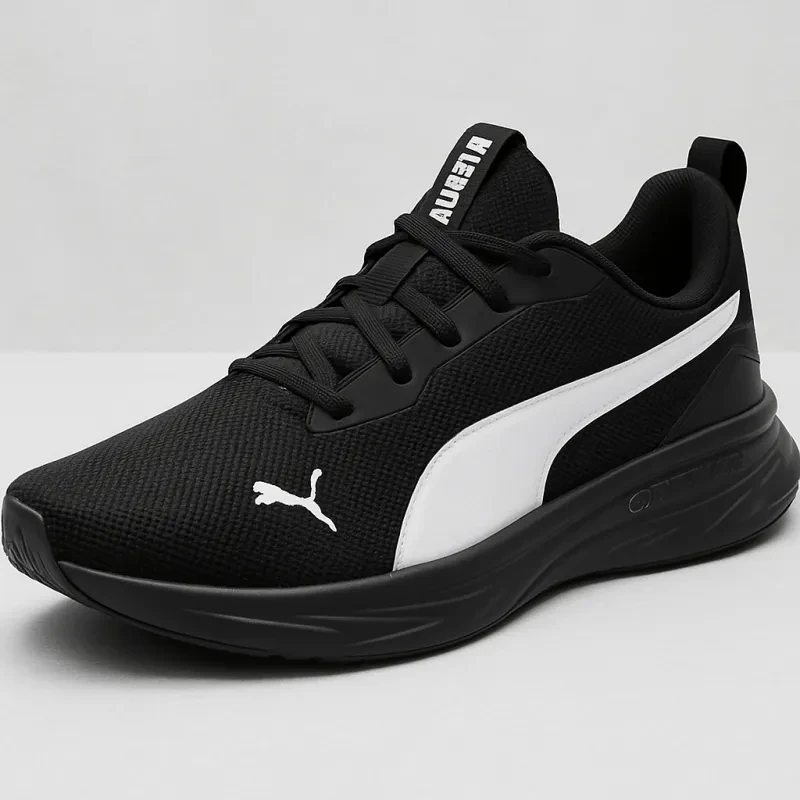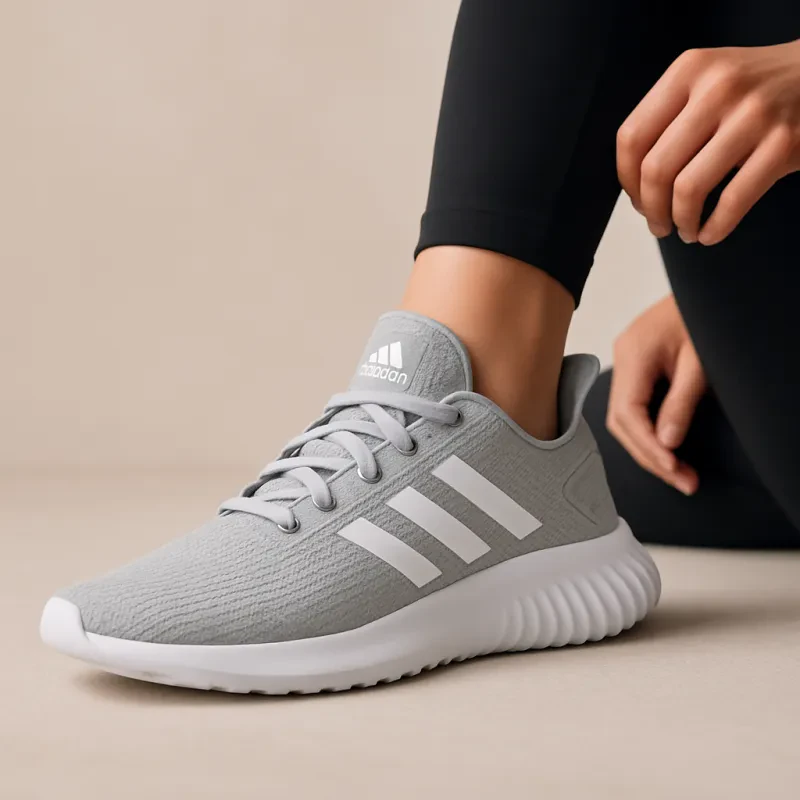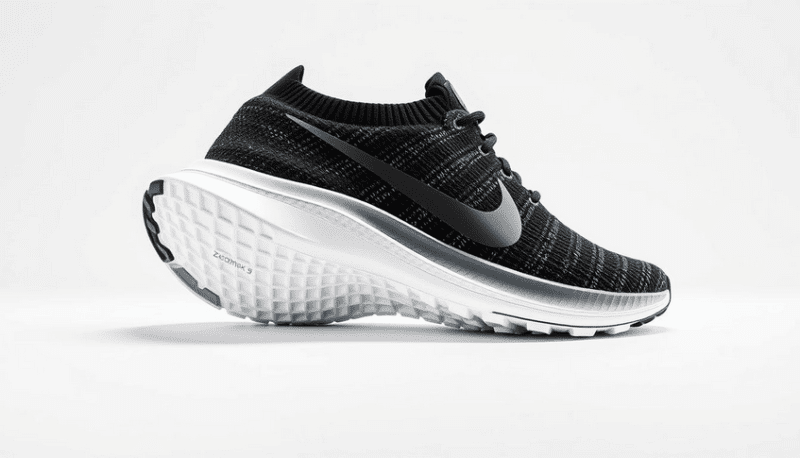Pros and Cons Explained:
Many tennis players wonder if they can use their running shoes on the court. As someone who's played both sports, I've thought about this too. While running shoes might seem like a good option, they're not ideal for tennis.
Running shoes lack the side-to-side support needed for quick movements in tennis. Tennis involves a lot of lateral motion, which running shoes aren't designed to handle. They're built for forward movement, making them less stable for the constant direction changes in tennis.
I've found that using the right shoes can make a big difference in how I play. Tennis shoes have special features like reinforced toe areas and non-marking soles that help with performance and protect court surfaces. While you might get away with using running shoes for a casual game, it's best to invest in proper tennis shoes for regular play.
Key Takeaways
- Running shoes don't provide enough lateral support for tennis movements
- Tennis shoes have specific features that improve performance on the court
- Using proper tennis shoes can help prevent injuries and boost your game
Key Differences Between Running Shoes and Tennis Shoes
Running shoes and tennis shoes have distinct features that set them apart. These differences affect how they perform for specific activities.
Design and Structure
Running shoes are made for forward motion. They have a curved shape to help roll the foot from heel to toe. The upper part is usually made of breathable mesh to keep feet cool during long runs.
Tennis shoes have a flatter design. This helps with quick side-to-side movements on the court. The upper is often leather or synthetic leather. It gives more support for sudden stops and direction changes.
I've noticed that tennis shoes have reinforced areas on the sides and toe. This helps them last longer during intense matches.
Sole Composition and Traction
The soles of running shoes are softer. They absorb shock from repetitive foot strikes on hard surfaces. The tread pattern is simple, often with grooves for flexibility.
Tennis shoe soles are harder and flatter. They have special patterns like herringbone for good grip on court surfaces. I've seen that these patterns help players pivot and slide when needed.
Most tennis shoes have non-marking soles. This is important for indoor courts that can get scuffed easily.
Suitability for Court Surfaces
Running shoes aren't made for tennis courts. They can mark up indoor courts and don't provide the right traction.
Tennis shoes are designed for different court types:
- Hard court shoes have durable soles for rough surfaces
- Clay court shoes have patterned soles to prevent clay buildup
- Grass court shoes have nubs or pimples for grip on slippery grass
I've found that using the right shoe for each surface can really improve my game.
Weight and Cushioning
Running shoes are often lighter than tennis shoes. They have more cushioning in the heel and forefoot for long-distance comfort.
Tennis shoes are a bit heavier. They trade some cushioning for stability and durability. The extra weight helps with quick stops and pivots.
I've noticed that running shoes feel bouncy, while tennis shoes feel more connected to the ground. This helps with balance during fast-paced rallies.
Physical Requirements of Tennis Play

Tennis demands unique physical skills from players. The sport relies heavily on agility, speed, and quick reactions on the court.
Importance of Lateral Movements
Lateral movements are key in tennis. I need to shift side-to-side quickly to reach shots. This puts stress on my ankles and knees. Running shoes don't give me enough support for these moves.
Tennis shoes have wider bases and reinforced sides. This helps me stay stable when I change direction fast. The extra support keeps my feet from rolling inward or outward too much.
Good lateral stability also helps prevent injuries. It lets me push off harder when I need to sprint across the court. This can make a big difference in my ability to return tough shots.
Footwork and Quick Movements
Quick footwork is vital in tennis. I have to be ready to move in any direction at a moment's notice. Tennis shoes are designed with this in mind.
They have flat, grippy soles that help me start and stop quickly. The low-to-the-ground design gives me better court feel and balance. This is crucial for those split-second adjustments I often need to make.
Tennis shoes also tend to be more flexible in the forefoot. This lets me pivot and change direction more easily. The snug fit keeps my foot from sliding around inside the shoe during quick movements.
Injury Prevention and Performance

Tennis shoes play a big role in keeping players safe and helping them do their best. They give support, comfort, and help players move well on the court.
Foot and Ankle Support
Tennis shoes have special features to protect feet and ankles. They have extra side support to stop ankles from rolling when players make quick moves. The shoes also have good arch support to help feet stay in the right position. This can prevent pain in the feet, ankles, and legs.
I've found that tennis shoes with a strong heel counter give even more ankle support. This is the stiff part at the back of the shoe. It helps keep the foot stable during side-to-side movements.
Breathability and Comfort
Tennis shoes are made to keep feet cool and dry. They use breathable materials that let air flow. This stops feet from getting too hot or sweaty. When feet stay dry, there's less chance of getting blisters.
Many tennis shoes have extra padding in key spots. This makes them comfy to wear for long matches. The padding also helps absorb shock when players run and jump.
Proper Fit and Running Economy
A good fit is key for both safety and performance. Tennis shoes should be snug but not tight. There should be a little space at the front for toes to move.
When shoes fit right, players can move faster and use less energy. This is called good running economy. The right shoes help players:
- Move quicker on the court
- Change direction faster
- Jump higher
- Play longer without getting tired
I always tell players to try on several pairs of shoes. It's important to find the ones that feel best for their feet.
Choosing Appropriate Footwear for Tennis

Picking the right shoes for tennis is key. Good tennis shoes give you grip, support, and comfort on the court. Let's look at what to think about when buying tennis shoes and some top brands to check out.
Factors to Consider When Buying
When I shop for tennis shoes, I look at a few key things. Grip is super important. The soles need good traction for quick stops and turns. Support matters too. I want shoes that keep my feet stable during side-to-side moves.
Comfort is another big factor. I try on shoes to make sure they fit well and feel good. Durability counts too. Tennis is tough on shoes, so I pick ones made to last.
I also think about my playing style. If I play a lot at the net, I want extra toe protection. For baseline play, I focus more on cushioning for my heels.
Recommended Brands and Models
Some brands make great tennis shoes. I like Adidas and Wilson. They have models built just for tennis.
Adidas Barricade is a popular choice. It's comfy and lasts a long time. Wilson Rush Pro is another good pick. It gives nice support for quick moves.
Nike and Asics make good tennis shoes too. The Nike Air Zoom Vapor is light and fast. Asics Gel-Resolution offers lots of cushioning.
I suggest trying on a few different brands. What works for me might not be best for you. It's worth taking time to find the right fit.
Frequently Asked Questions
People often have questions about using running shoes for tennis. Let's look at some common concerns about footwear choices for the tennis court.
Are specialized tennis shoes necessary for playing tennis?
Tennis shoes are designed for the specific movements in tennis. They provide better support and grip for quick side-to-side motions. While not absolutely required, tennis shoes can improve your performance and reduce injury risk on the court.
What are the differences between tennis shoes and running shoes?
Tennis shoes have wider soles for stability during lateral movements. They also have reinforced toe areas to handle sliding. Running shoes focus on cushioning for forward motion and lack the lateral support needed in tennis.
Can I use my running shoes when I play tennis on a hard court?
I don't recommend using running shoes on hard courts. They lack the proper grip and support for tennis movements. This can lead to slips and falls. Tennis shoes are made to handle the quick stops and starts on hard surfaces.
Is it suitable to use tennis shoes for regular gym workouts?
Tennis shoes can work for some gym activities. They're good for exercises with side-to-side movements. But for heavy lifting or running on a treadmill, other shoe types might be better suited.
What are the best types of shoes to wear for competitive tennis?
For competitive play, I suggest shoes made specifically for tennis. Look for options with good lateral support, cushioning, and durability. The exact type depends on your playing style and the court surface.
In terms of durability and performance, how do tennis shoes compare to running shoes on the court?
Tennis shoes last longer on the court than running shoes. They have tougher soles to handle the abrasive surfaces. Tennis shoes also perform better, giving more stability and grip during tennis-specific movements.



